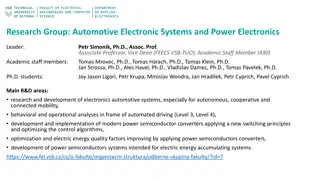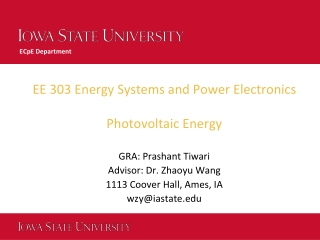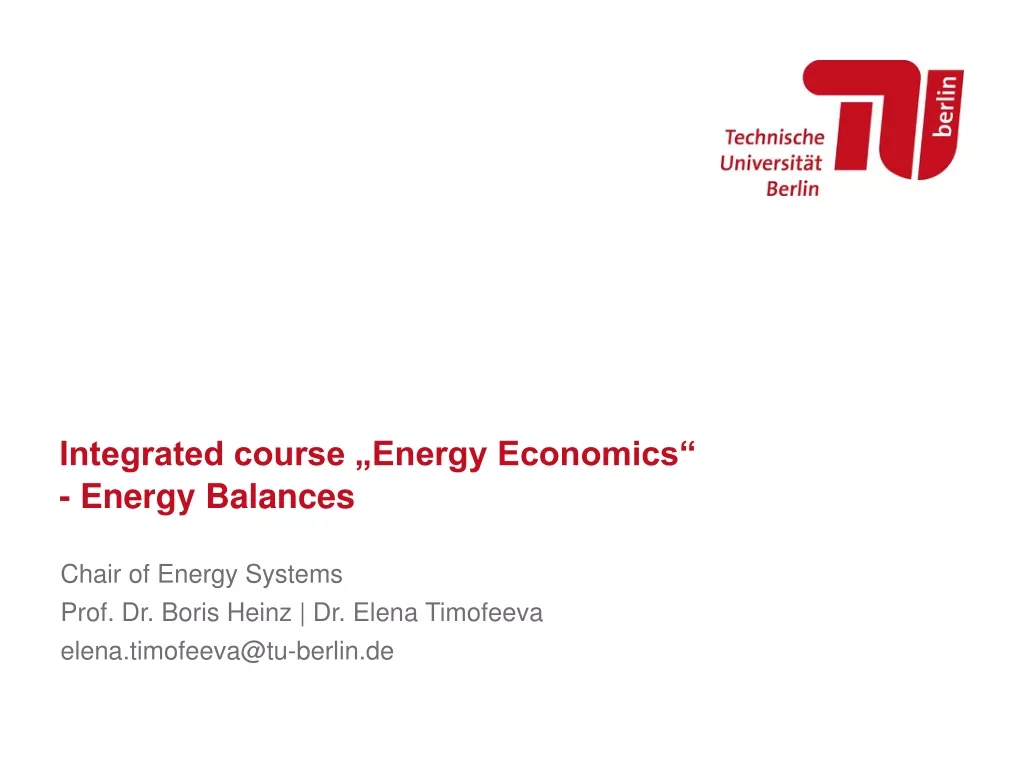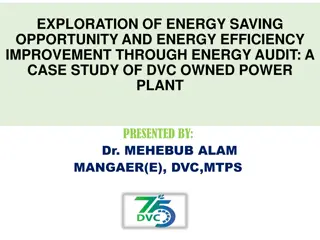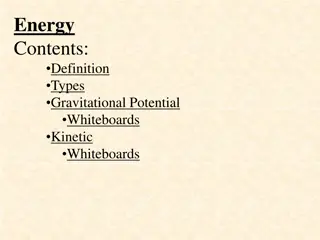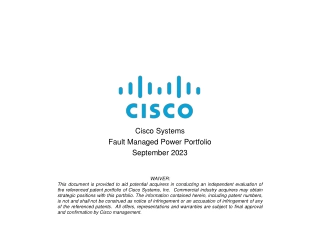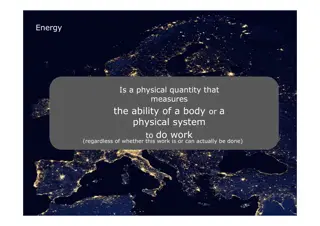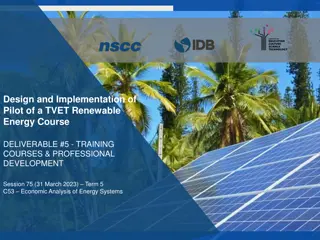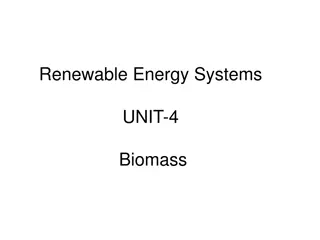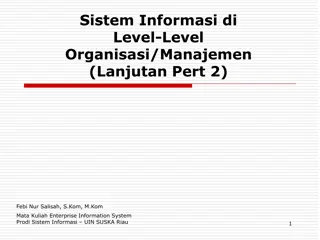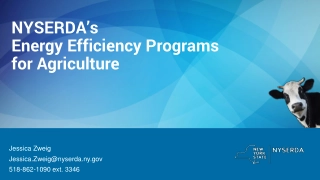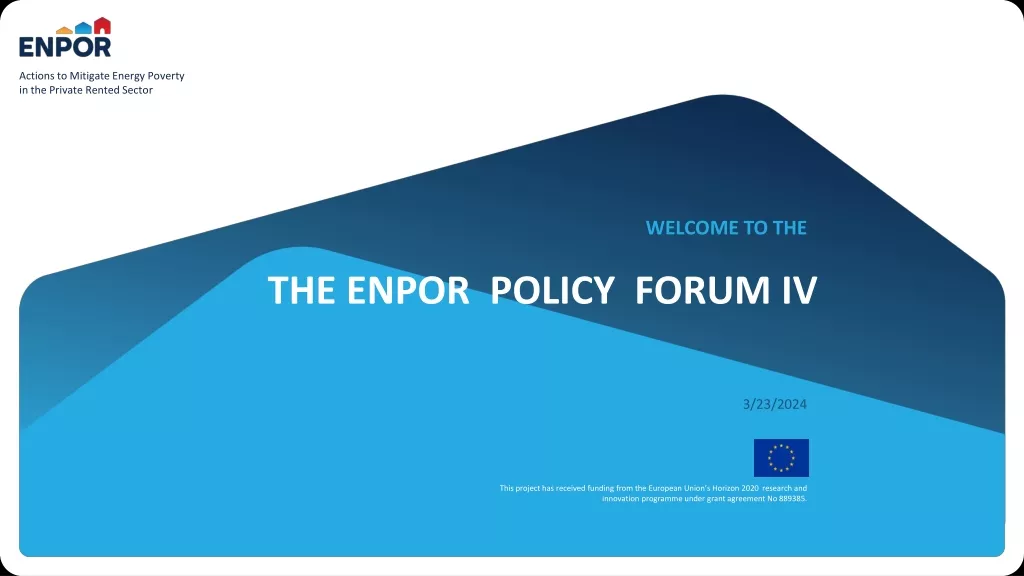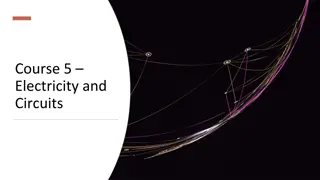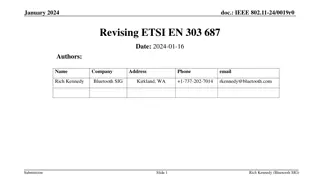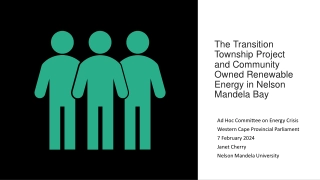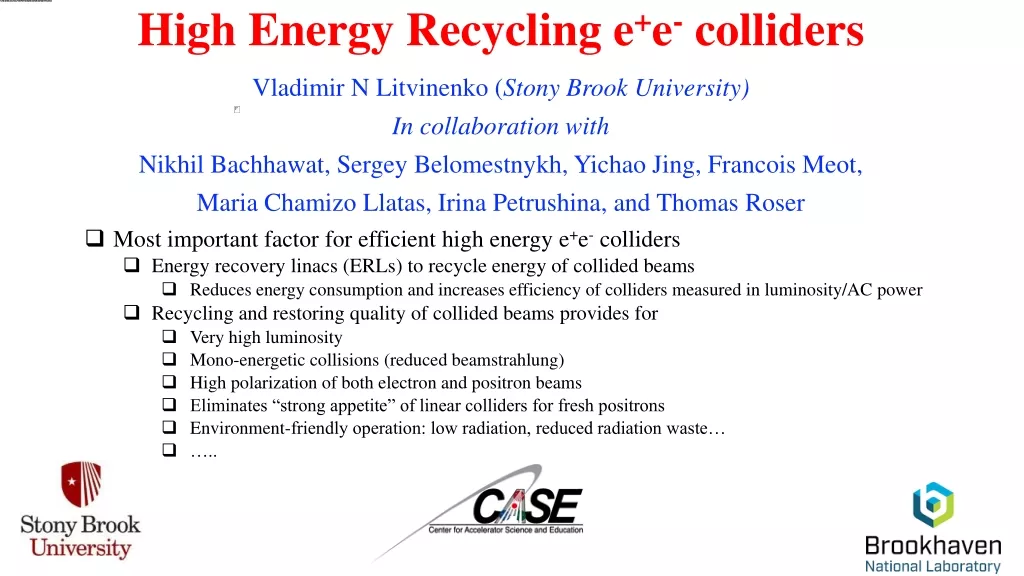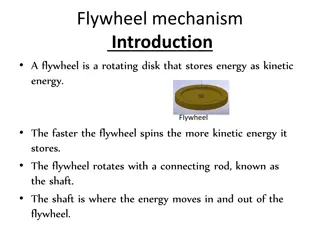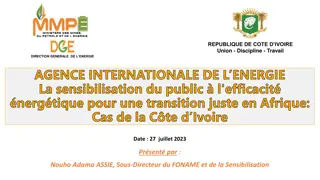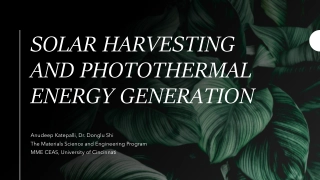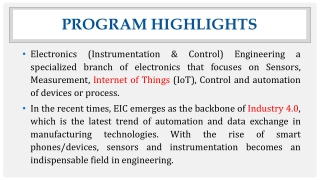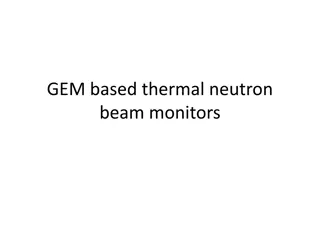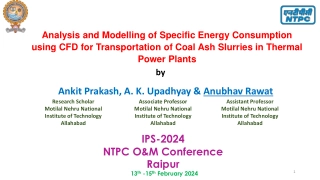EE 303 Energy Systems and Power Electronics
Explore the world of power electronics through topics like DC-DC converters, buck converters, boost converters, duty ratio calculations, and more. Learn how to analyze and compute various aspects of power systems for efficient energy management.
Download Presentation

Please find below an Image/Link to download the presentation.
The content on the website is provided AS IS for your information and personal use only. It may not be sold, licensed, or shared on other websites without obtaining consent from the author. Download presentation by click this link. If you encounter any issues during the download, it is possible that the publisher has removed the file from their server.
E N D
Presentation Transcript
ECpE Department EE 303 Energy Systems and Power Electronics Power Electronics GRA: Prashant Tiwari Advisor: Dr. Zhaoyu Wang 1113 Coover Hall, Ames, IA wzy@iastate.edu
DC DC Converters Buck Converter (Step Down Converter) Boost Converter (Step Up Converter) Buck Boost Converter (Step Up/Down Converter) 2 ECpE Department
Buck Converter Step Down Converter 3 ECpE Department
Contd ????=1 ????? ? 0 =??? ? ?? ? =??? = duty ratio ? ???? = ? ?? 4 ECpE Department
Example The switching frequency of a chopper is 10 KHz, and the source voltage is 40 V. For an average load voltage of 20 V and a load resistance of 10 , compute the following: 1. Duty ratio 2. Average current of the load 3. rms voltage across the load 4. Load power 5 ECpE Department
Example Solution 1. The duty ratio is ? =?ave =20 40= 0.5 ?? Before we compute the on-time, we need to compute the period: =1 1 10= 0.1 ms ? ?= ?on = ?? = 0.5 0.1 = 0.05 ms 2. The average load current is ?ave=?ave =20 10= 2 A ? 3. The rms voltage of the load can be computed using the standard formula for the rms quantity ??? ??2 ????= ?? 1 ? ??? ? ??2?? = ? = = 28.28 V 0 ? =?2 ?=28.282 4. = 80 W 10 6 ECpE Department
DC DC Converters Buck Converter (Step Down Converter) Boost Converter (Step Up Converter) Buck Boost Converter (Step Up/Down Converter) 7 ECpE Department
Boost Converter Filter reduces the voltage ripple 8 ECpE Department
Contd When transistor is closed. (???,???), charge inductor ??= ????? = ? ??? ?? ??? where ?onis the change in the current during the period ???. Since the voltage across the inductor is equal to the source voltage when the transistor is closed. ??= ? ??? ??? When transistor is open. (????,????), dicharge inductor ????? ??= ??+ ? ???? ???? ??= ??+ ??= ??+ ? 9 ECpE Department
Contd ????? ??= ??+ ? ???? ???? ??= ??+ ??= ??+ ? ??? ??? . ???? ???= ???? ??= ??+ ?? ???? ??? ????= ??(1 + ??? ????) ??= ??+ ?? 10 ECpE Department
Buck Boost Converter 11 ECpE Department
Contd When transistor is closed. (???,???) ??= ????? = ? ??? ?? ??? ??= ??= ? ??? ??? When transistor is open. (????,????) ??= ???? ??= ??= ? ???? ???? ???? ??? ??? . ???? ??? ???? ??= ?? ( ???= ????) ??= ?? ???? 12 ECpE Department
Example A buck boost converter with an input voltage of 20 V is used to regulate the voltage across a 10 load. The switching frequency of the transistor is 5 kHz. Compute the following: - On-time of the transistor to maintain the output voltage at 10 V 13 ECpE Department
Example A buck boost converter with an input voltage of 20 V is used to regulate the voltage across a 10 load. The switching frequency of the transistor is 5 kHz. Compute the following: - On-time of the transistor to maintain the output voltage at 10 V Solution, The period can be computed from the switching frequency ? ? =1 ?=1 5= 0.2 ms ??? ??? ??= ?? ??? ????=?? ??=10 20= 0.5 ????+ ???= ? ???= 0.0667 ?? 14 ECpE Department
DC-AC Inverter (H- Bridge Circuit) Most of the inverter consists of simple H-Bridge arrangement. The circuit is an implementation of a single-phase H-Bridge circuit using Insulated Gate Bipolar Transistors (IGBT). The IGBT act as a switch in the above circuit. When a signal is applied to the gate, they turn on and when the signal is removed, they turn off. By closing Q1 and Q4, a positive DC supply is applied to the load. The Q3, and ?3 will result in a negative ?? supply across the load. Then the control circuits are used to generate the necessary gate signals to produce the required PWM waveform. It is necessary to avoid short circuits. This happens by closing both Q1 and ?2 at the same time. To avoid this, it is necessary to turn off one set of IGBT before turning on the next. The Diodes provide a necessary path for inductive current in order to limit potential voltage build-up during the transition period. The capacitor provides smoothing to even out any variation in the DC supply. 15 ECpE Department
Contd 16 ECpE Department
Contd 17 ECpE Department
Contd 18 ECpE Department
Thank You! 19 ECpE Department


